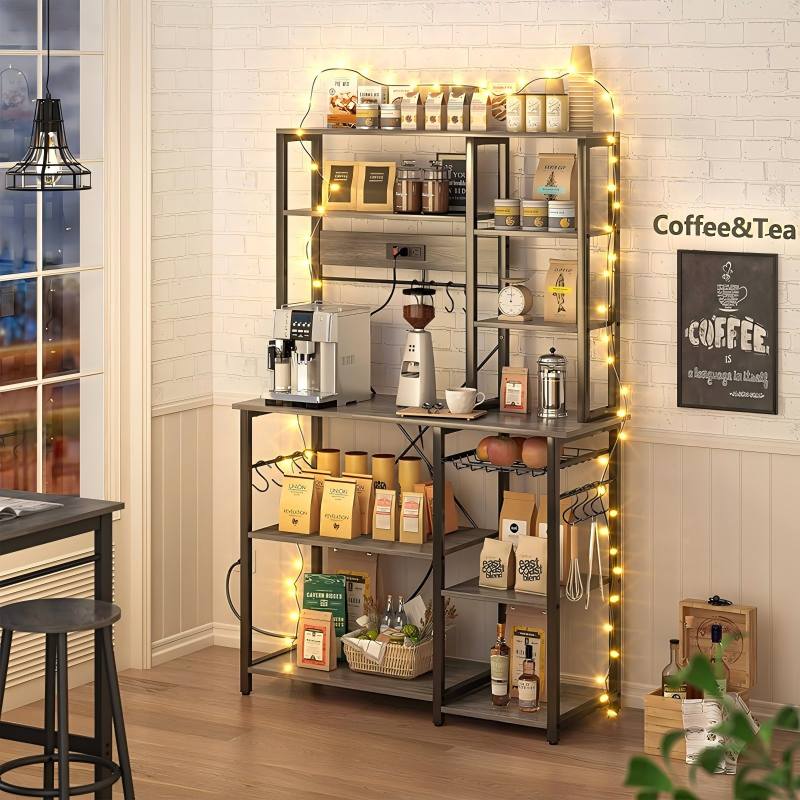How To Build A Functional And Stylish Kitchen Storage Shelf
Maximizing storage is a universal kitchen challenge. Whether you need space for pantry goods, cookware, or frequently used appliances, a well-designed shelf can transform your kitchen's organization and aesthetic. Modern materials like MDF (Medium-Density Fiberboard) and Particle Board (PB), combined with iron frames, offer a durable, cost-effective, and stylish solution.
This guide outlines the key steps and considerations for building a storage shelf that is both highly functional and aligns with modern, contemporary, or vintage design principles.
1. Planning and Design: The Blueprint for Success
Before any assembly begins, careful planning is essential.
Assess Your Needs & Space: Determine what you intend to store. Heavy appliances require a sturdier design than lightweight pantry items. Precisely measure the available space in your kitchen—be it a blank wall, an empty corner, or next to the refrigerator—accounting for baseboard depth.
Choose Your Style:
Modern & Contemporary: Opt for clean lines, a minimalist silhouette, and a neutral color palette (e.g., matte white, black, or grey MDF/PB). An iron frame with straight, slender legs and sharp angles complements this style perfectly.
Vintage/Industrial: Choose a design with decorative elements. An iron frame with exposed bolts, a distressed metal finish (e.g., blacksmith black or bronze), and shelving with a wood-look laminate or a chunky, reclaimed appearance would achieve this look.
Create a Cut List: Based on your dimensions, list all the parts you need: top panel, bottom panel, side panels, shelves, and any reinforcing rails. This ensures material efficiency and accuracy.
2. Material Selection: MDF/PB + Iron Frame
The combination of an iron frame and MDF/PB panels is ideal for Kitchen Furniture.
Iron Frame: Provides the primary structural support and defines the shelf's overall style. A pre-fabricated or custom-welded iron frame offers exceptional strength and stability, capable of supporting significant weight without wobbling.
MDF/PB Shelving: These engineered wood products provide a perfectly smooth, uniform surface ideal for applying laminates, veneers, or paint. They are resistant to warping and are more cost-effective than solid wood. For a kitchen environment, select MR (Moisture-Resistant) MDF or PB to better withstand humidity and minor spills.
3. The Assembly Process: A Methodical Approach
Step 1: Prepare the Components. If not pre-cut, precisely cut all MDF/PB panels to size using a circular saw or Table saw. Sand all edges until smooth. Apply your chosen finish—a laminated sheet is highly recommended for kitchens as it creates a durable, wipeable, and water-resistant surface.
Step 2: Assemble the Iron Frame. If your frame requires assembly, follow the manufacturer's instructions. Ensure all joints are tight and the frame is square. Use a level to confirm it is perfectly upright on your kitchen floor.
Step 3: Install the Shelves. This is the critical step where the shelves integrate with the frame. Common methods include:
Pre-drilled Holes and Bolts: The most secure method. Shelves are bolted directly into pre-tapped holes in the iron frame.
Support Brackets: Metal L-brackets or shelf pins can be attached to the iron uprights to hold the shelves in place.
Integrated Ledges: Some iron frames have small welded ledges upon which the shelves simply rest. For added security, these can be adhered with a strong construction adhesive.
Step 4: Final Checks and Installation. Once all shelves are secured, double-check for stability and level. Anchor the top of the shelf to the wall using a provided bracket and drywall anchor. This is a crucial safety step to prevent tipping, especially in a household with children.
4. Styling Your New Kitchen Shelf
The functionality extends beyond storage to display.
Group Items: Store items in cohesive groups—all baking supplies together, oils and vinegar on a tray, or coffee-making equipment in one station.
Incorporate Containers: Use uniform jars, baskets, or bins to corral small items. This creates a clean, organized look that enhances your chosen style, whether modern or vintage.
Add a Personal Touch: Leave space for a small plant or a piece of decorative pottery to soften the look and make the shelf feel integrated into your kitchen's decor.
Conclusion
Building a Kitchen Storage Shelf from an MDF/PB and iron frame is a project that combines practical utility with significant style impact. By prioritizing precise planning, selecting the right moisture-resistant materials, and following a careful assembly process, you can create a custom storage solution that declutters your kitchen and enhances its overall design for years to come.


